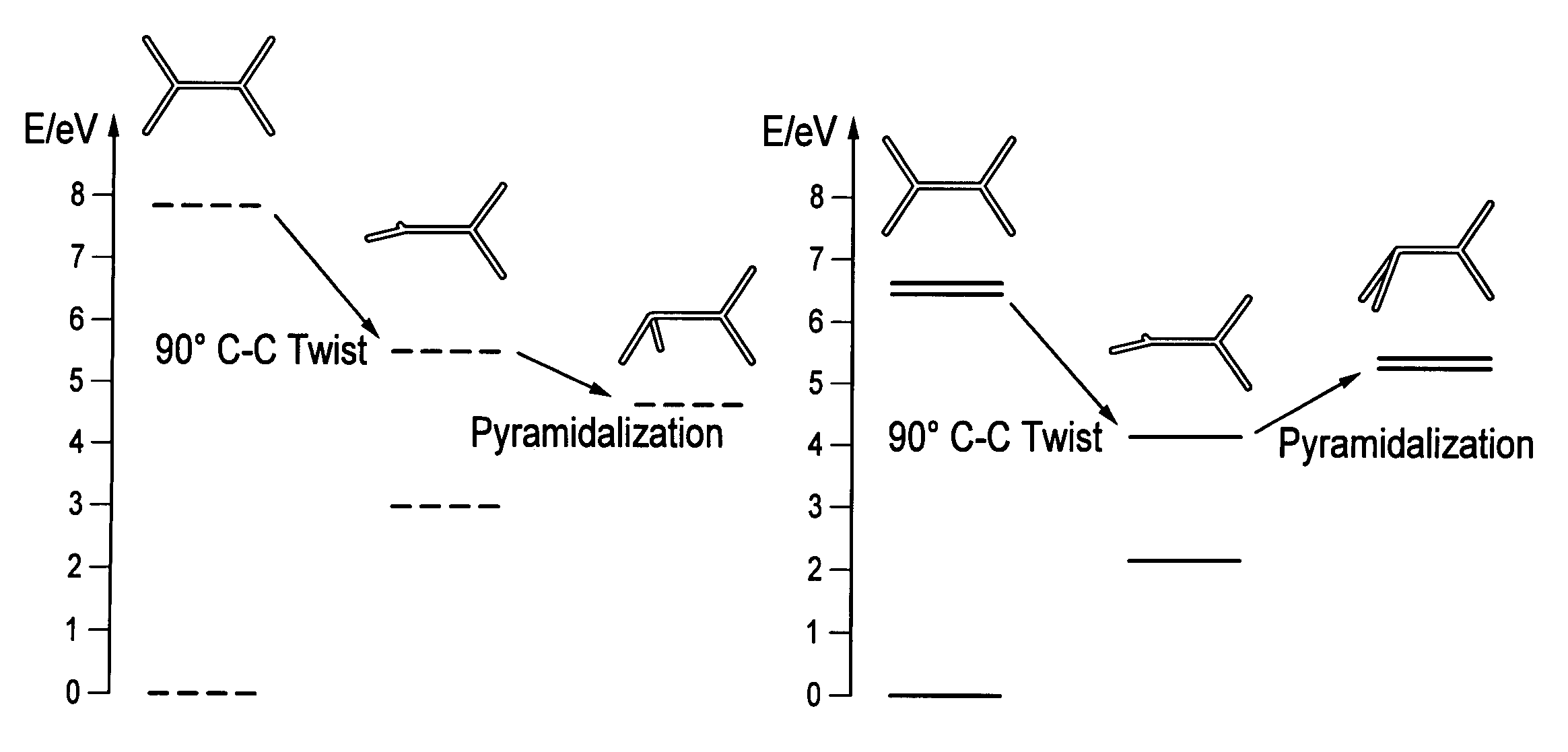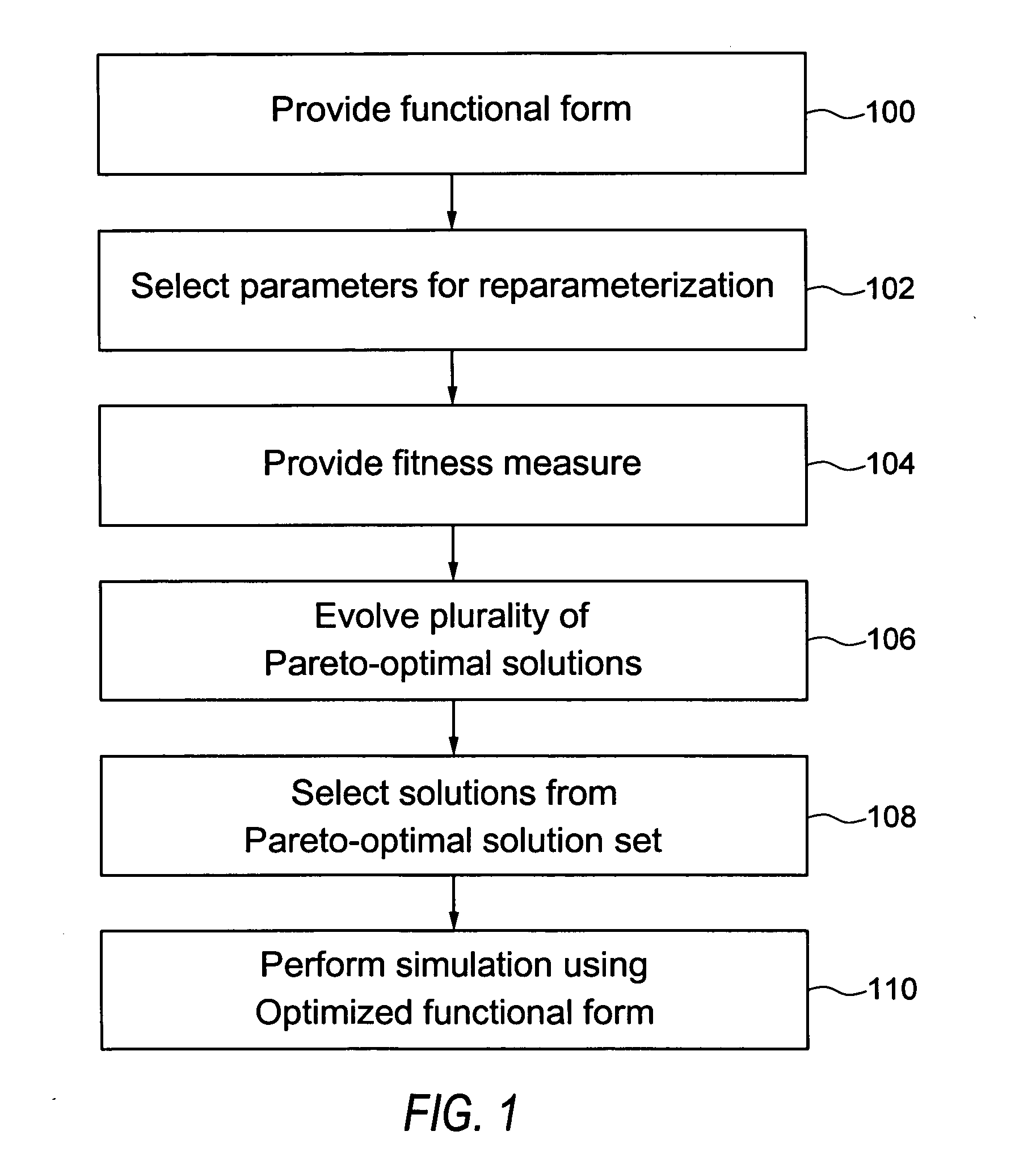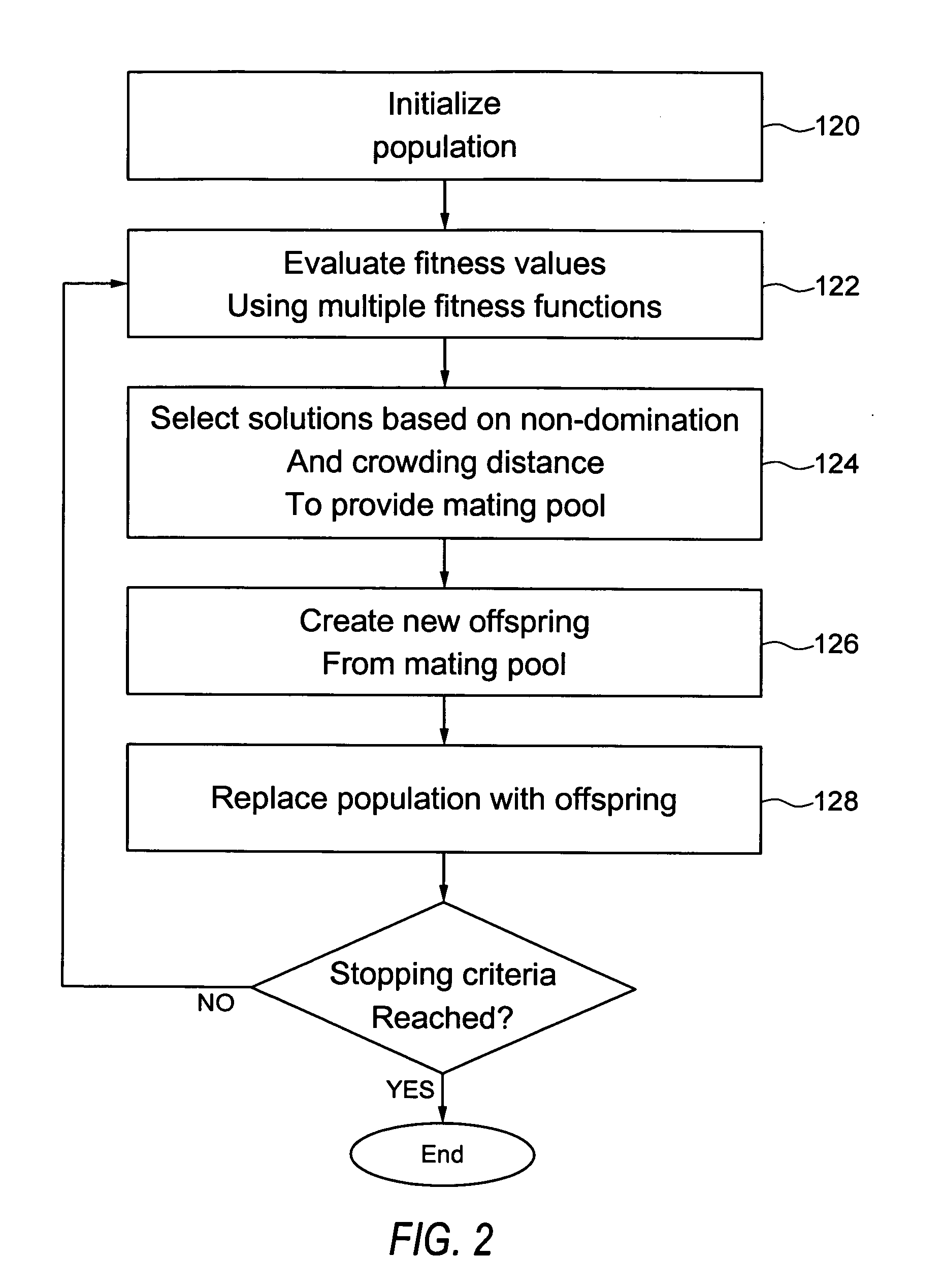Quantum chemistry simulations using optimization methods
a quantitative chemistry and optimization method technology, applied in the field of simulations, analysis and predictions, can solve the problems of insufficient conventional simulation and prediction methods, high computational costs, and rapid approach to the impossible for reactions in complex environments
- Summary
- Abstract
- Description
- Claims
- Application Information
AI Technical Summary
Benefits of technology
Problems solved by technology
Method used
Image
Examples
Embodiment Construction
[0027]A comprehensive understanding of the photochemistry of molecules requires bridging the gap between molecular dynamics and quantum chemistry. Quantum dynamic simulations require simultaneous solution of both nuclear and electronic Schrodinger equations. Additionally, the potential energy surfaces (PES) must be of high quality and very robust, because the portions of the PES that are critical to the behavior of a molecule may be far removed from the Franck-Condon region (the directly excited-state portion of the PES).
[0028]The ab initio multiple spawning (AIMS) method has been developed to address such problems. While the AIMS method is extremely flexible and accurate (for example, it can describe quantum mechanical phenomena such as tunneling and non-adiabatic transitions), it is computationally very expensive, especially for large molecules, due to the large number of ab initio electronic structure calculations involved, making long-time dynamics simulations highly improbable,...
PUM
 Login to View More
Login to View More Abstract
Description
Claims
Application Information
 Login to View More
Login to View More - R&D
- Intellectual Property
- Life Sciences
- Materials
- Tech Scout
- Unparalleled Data Quality
- Higher Quality Content
- 60% Fewer Hallucinations
Browse by: Latest US Patents, China's latest patents, Technical Efficacy Thesaurus, Application Domain, Technology Topic, Popular Technical Reports.
© 2025 PatSnap. All rights reserved.Legal|Privacy policy|Modern Slavery Act Transparency Statement|Sitemap|About US| Contact US: help@patsnap.com



